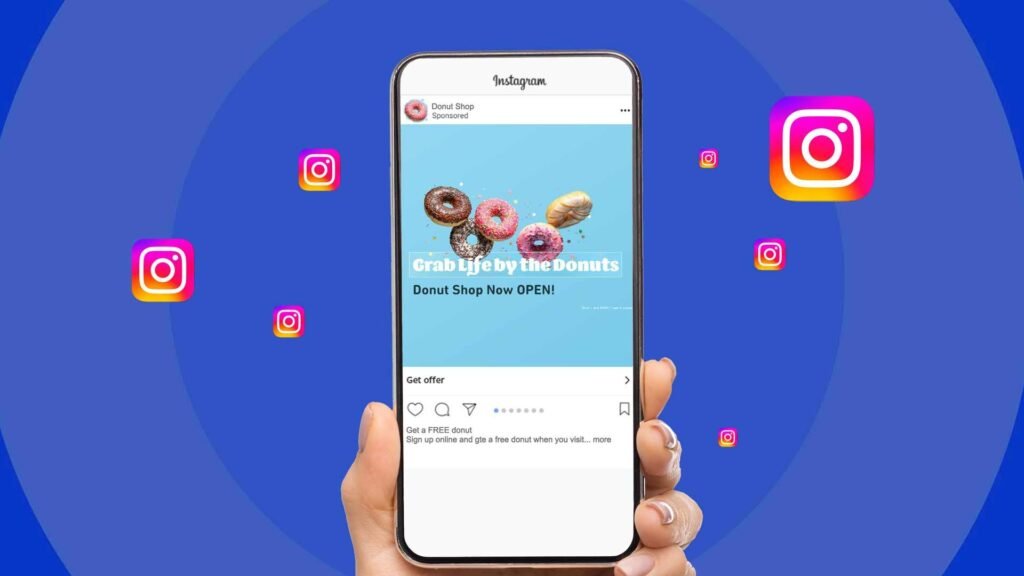Understanding Instagram ads analytics metrics is crucial for measuring the effectiveness of your campaigns and optimizing your advertising strategies. With the right insights, you can make data-driven decisions that enhance performance and drive better results. In this guide, we’ll break down key Instagram ads analytics metrics and explain how to use them to your advantage.

Key Metrics to Track
Firstly, it’s important to be familiar with the key metrics you should track. Instagram provides a range of analytics metrics that offer insights into how your ads are performing. Here are some of the most crucial ones:
- Impressions: This metric shows how many times your ad has been displayed. Tracking impressions helps you understand the reach of your ad and how often it’s being seen by users.
- Reach: Reach indicates the number of unique users who have seen your ad. It’s different from impressions because it counts each user only once, regardless of how many times they’ve seen the ad.
- Engagement: Engagement measures interactions with your ad, including likes, comments, shares, and saves. High engagement often means that your ad content resonates well with your audience.
- Click-Through Rate (CTR): CTR shows the percentage of users who clicked on your ad after seeing it. A higher CTR indicates that your ad is compelling and encourages users to take action.
- Conversion Rate: This metric tracks the percentage of users who completed a desired action after clicking on your ad, such as making a purchase or signing up for a newsletter. It’s essential for measuring the effectiveness of your ad in driving actual results.
Analyzing Impressions and Reach
Understanding impressions and reach is fundamental to gauging your ad’s visibility. Impressions tell you how often your ad is being shown, which helps assess its exposure. Reach, on the other hand, tells you how many unique users are seeing your ad.
If your impressions are high but reach is low, it might indicate that your ad is being shown repeatedly to the same users. Ideally, you want a balance between high reach and high impressions to ensure that your ad is reaching a broad audience and making a significant impact.
Measuring Engagement
Engagement is a critical metric for assessing how well your audience is interacting with your ad content. High engagement rates suggest that your ad is capturing attention and generating interest. To boost engagement, focus on creating content that is visually appealing, relevant, and encourages interaction.
Monitor the types of engagement your ad receives (likes, comments, shares) to understand what resonates with your audience. Use this feedback to refine your ad content and strategy for better performance.
Evaluating Click-Through Rate (CTR)
CTR is a vital metric for understanding how effectively your ad drives users to take action. A high CTR indicates that your ad’s message and call-to-action (CTA) are compelling enough to prompt users to click.
If your CTR is low, consider testing different ad creatives, headlines, or CTAs to see what works best. A/B testing different versions of your ad can help identify elements that increase CTR and improve overall effectiveness.
Analyzing Conversion Rate
Conversion rate is essential for measuring the success of your ad in achieving your business objectives. It tracks the percentage of users who complete a desired action after clicking on your ad. High conversion rates suggest that your ad is successfully driving users to take meaningful actions.
If your conversion rate is lower than expected, examine the user experience after clicking on your ad. Ensure that your landing page or website is user-friendly and aligns with the ad’s message. Improvements in these areas can help boost conversion rates.
Using Metrics to Optimize Ads
Additionally, use these metrics to optimize your ads continuously. Regularly review your analytics to identify trends and areas for improvement. Adjust your ad targeting, content, and budget based on performance data to enhance effectiveness.
For example, if you notice a high engagement rate but low conversions, you may need to refine your CTA or improve your landing page. Conversely, if CTR is high but engagement is low, consider revising your ad content to better resonate with your audience.
Conclusion
In summary, understanding Instagram ads analytics metrics is crucial for measuring and improving your ad performance. Focus on key metrics such as impressions, reach, engagement, CTR, and conversion rate. Analyze these metrics to gain insights into how your ads are performing and make data-driven adjustments to optimize your strategy. By leveraging these insights, you can enhance your Instagram ads effectiveness and achieve your marketing goals.




